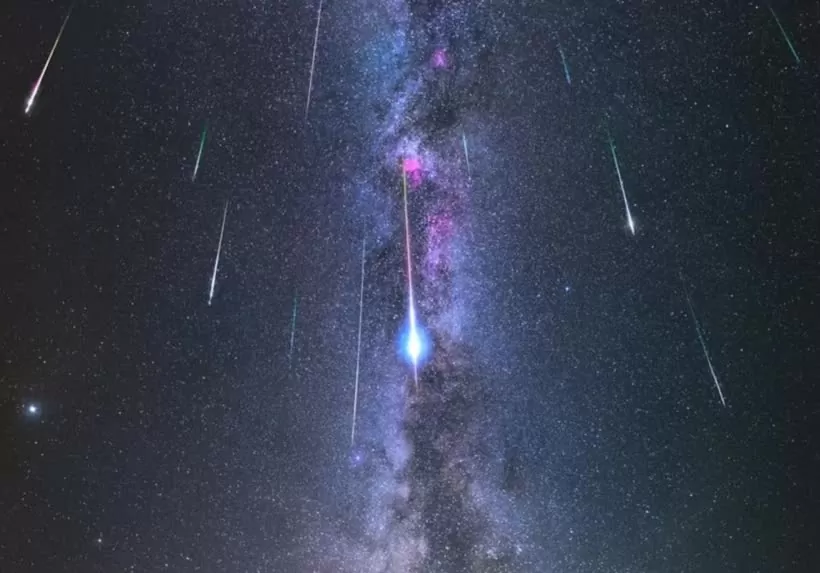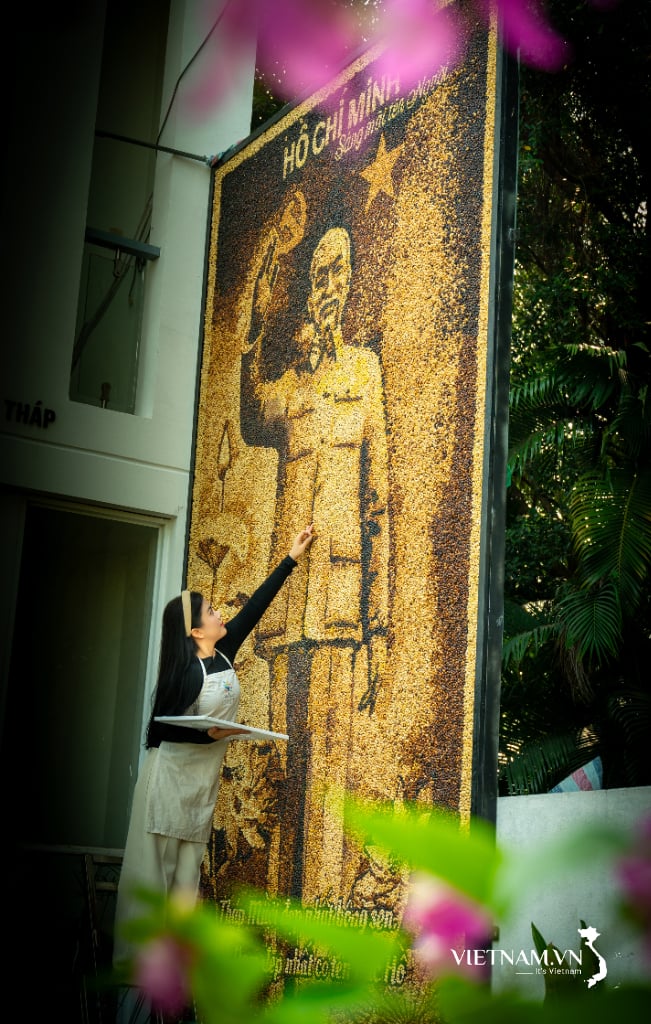These magical streaks of light have fascinated people for centuries, especially when they appear in dazzling “shows” in the sky known as meteor showers.
 |
| The Milky Way shines brightly in the night sky during a Perseids meteor shower, above the mountains and lake of Pampilhosa da Serra, central Portugal. (Source: National Geographic) |
What causes these spectacular meteor showers to appear in the sky? When you send a wish to a shooting star, you are actually handing your hopes and dreams to a small, burning piece of space rock hurtling through Earth’s atmosphere. These magical streaks of light have fascinated people for centuries, especially when they appear in dazzling displays in the sky called meteor showers.
Since the mid-1800s, scientists have known that most meteor showers are born from icy comets. When one of these visitors from deep space enters the inner Solar System, heat from the Sun causes the ice on the comet's surface to turn from ice to gas—a process called “sublimation.” This is what creates the comet's beautiful tail.
As the ice evaporates, the comet releases dust, sand-sized particles, and even a few boulder-sized chunks of rock that are left behind in its path. With each orbit, that process creates a stream of debris along the comet's path, which lingers long after the icy ball has returned to the edge of the Solar System.
On some occasions, Earth passes through debris streams on its journey around the Sun. As the planet plows through the remnants of comets, the rocks hit our atmosphere and burn up, creating a spectacular “show” in the night sky.
Meteor showers also occur on Mars, although the red planet sees different “shows” depending on the comet orbits it passes through. A few meteor showers originate from asteroids, not comets. The Geminids fall into this category and are thought to originate from the asteroid 3200 Phaethon.
Scientists aren’t exactly sure why the asteroid created such a brilliant display. But one study theorizes that the asteroid was part of a larger planetary body, possibly a comet, that broke apart in a collision or explosion, and the debris created the meteor shower.
A few meteors can fall on any given night, but the best time to see them is at the peak of an annual meteor shower. This is when Earth passes through a particularly dense part of the cometary debris stream – an “event” that occurs at predictable times each year.
As seen from Earth's surface, the meteors in annual meteor showers appear to radiate from specific points in the night sky. As a result, most meteor showers are named after the constellations from which they appear to fall.
For example, the intense Perseid meteor shower that occurs every August is named after its origin in the constellation Perseus - a mythological hero.
Each major meteor shower has a different peak rate. Some, like the Lyrids in April, produce around 15-20 meteors per hour. Others, like the Geminids in December, produce as many as 60-70 meteors per hour.
Unfortunately, astronomers can't yet predict exactly when a particular meteor shower will produce a particularly bright display. Some major meteor showers are best seen from either the Northern or Southern Hemisphere.
The best way to experience a meteor shower is to head to darker, more rural areas away from light pollution and wait for the shower’s bright constellation to “rise” high in the sky. Let your eyes adjust to the darkness, then pay attention to the fleeting flashes of light.
Source


![[Photo] General Secretary To Lam receives Australian Ambassador to Vietnam Gillian Bird](https://vphoto.vietnam.vn/thumb/1200x675/vietnam/resource/IMAGE/2025/6/26/ce86495a92b4465181604bfb79f257de)



























































































Comment (0)